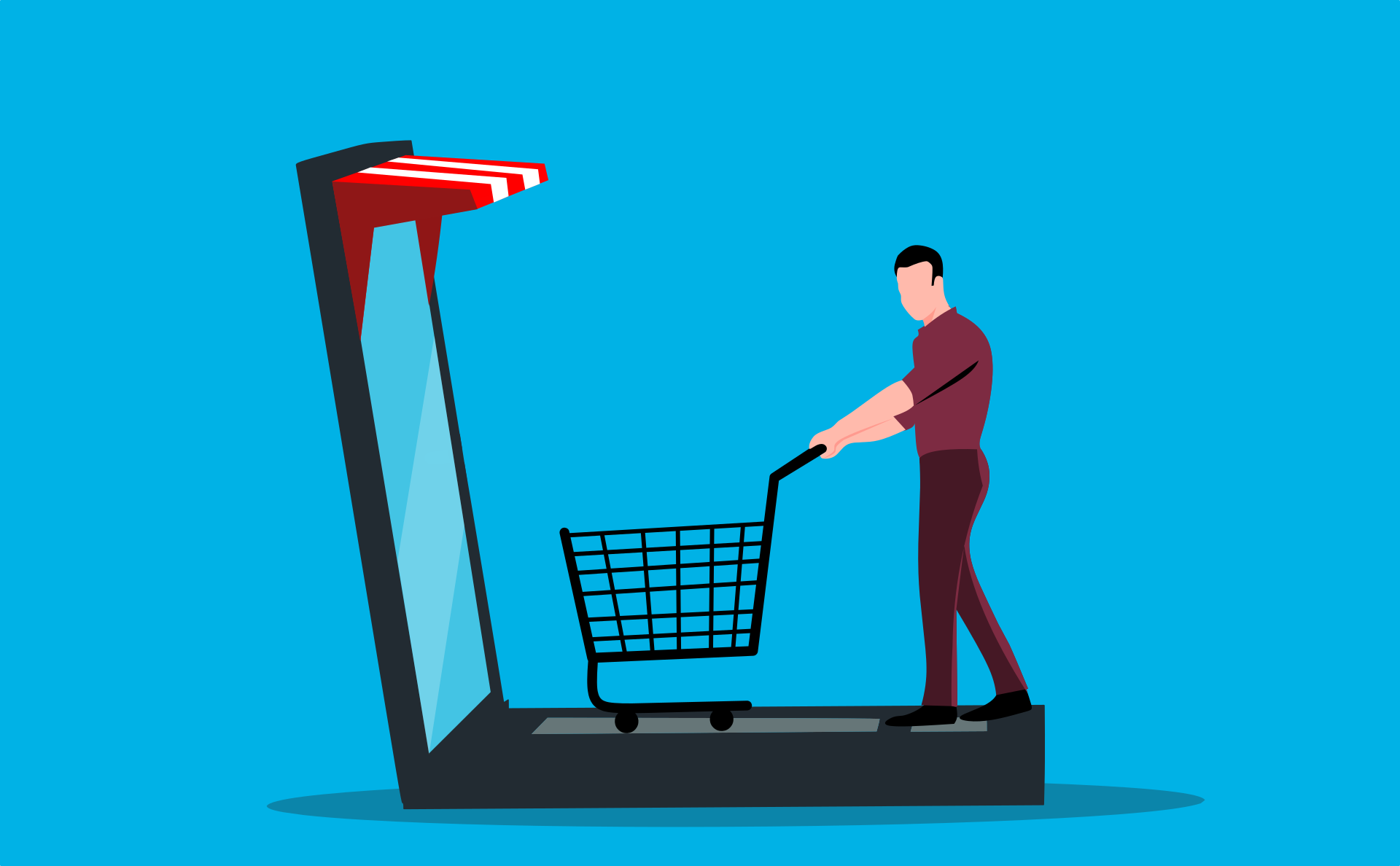The Future of Buying and Selling: How E-Commerce Innovations Are Changing How We Shop
Thanks to Several E-Commerce Innovations Powered by a Rise in New Technologies and Options, the Next Stage of Online Shopping is Beginning to Take Shape
It's rare to find a company relying solely on its brick-and-mortar storefront in today’s digital era. While many executives in the pre-pandemic world had just started thinking about a digital transformation strategy, the rapid spread of COVID demanded a much quicker timeline. Today, the brands that are thriving in this digital marketplace have more than just an online presence, they also deliver positive customer experiences by providing details on product availability in real time, and by offering clear delivery dates.
The future of e-commerce hinges on differentiated, customer-centric experiences. To appeal to increasingly sophisticated buyers that are keenly aware of the pros and cons of buying online, retailers need to offer more options than ever before. From the rise of chatbots to digital humans, here are the e-commerce innovations that are shaping the future of online sales for good.

Augmented Reality Will Help You Preview Products at Home
Whether you realize it or not, the majority of smartphones sitting innocuously in pockets all around the world are regularly being geotagged by sales engines (don’t worry, you can turn it off). For those touring brick-and-mortar stores, this has been an effective way of pushing product and sales information to your phone, and new e-commerce innovations are taking it one step further.
Trends like augmented reality, which enables you to overlay graphics on top of the real world — think Instagram’s AR effects — will soon supercharge how geotagging will work. You could point your camera at a car you’re considering buying and be provided with details on the make and model, or you could receive customized video demonstrations of products on your phone with holographic digital avatars created to be your personal assistant.
Several companies with global footprints have already begun implementing this technology: IKEA’s Place app, for instance, allows you to grab a mobile device and use it to place products anywhere in your house. They even react to lighting conditions and cast realistic shadows on your floor. With almost two billion people estimated to use augmented reality on their mobile devices by 2024, the possibilities are endless.

Product Delivery Will Become Lightning-Fast
Amazon has built its “Prime” delivery around its ability to deliver in two days, and in some cases even same day, but its ambitions go much further. For the last few years, the e-commerce giant has been working on drone delivery. One day soon, don’t be surprised to see an Amazon drone drop down out of the sky and deliver anything and everything you desire, from groceries to clothes to computer hardware, all within the hour.
Faster delivery times are also being augmented by an increase in “drop in” destinations. That includes both centralized hub locations and local drop boxes, both of which can also be used for returns. This is ideal for anyone looking for a little extra security, people that are on a tight schedule or anyone that simply prefers a more private experience when shopping.

AI and Machine Learning Software Will Help Close Your Deals
As artificial intelligence and machine learning improve, anyone selling goods online will potentially reap the benefits. Companies like Salesforce, for example, have already developed software that gains in-depth insights on each customer. It then processes that data using machine learning to deliver personalized, cross-channel experiences at any point in the user journey.
It won’t be long before other sales platforms begin to deliver similar products, as well as use machine learning to help with everything from inventory planning to forecasting. Better automation and synchronized data are perfectly suited for an integrated business model that utilizes faster order fulfillment and timely chatbot communication. And as true AI begins to emerge, shoppers will have their own digital assistants to handle their needs for them. Imagine telling your phone what you need and then an hour later it simply arrives. We’re not that far off.

Chatbots Will Turn Into More Helpful Digital Humans
Chatbots have been with us for a while, but as anyone that has gone through the text equivalent of a phone tree can attest, most bots can’t replace talking to a real person. In the future, digital avatars powered by AI will help bridge the gap. They’ll demonstrate what different clothing sizes might look like, how products work and even help solve technical problems directly from your mobile device or laptop. They may even strike up a conversation about the weather, or your favorite movie.
Japanese clothing brand, ANAYI has already demonstrated the benefits of using digital avatar humans in these ways.
To highlight its new spring and summer collection, ANAYI gave us a look at how 3D models can change the way we shop. Using volumetric videos, online shoppers were able to view a 3D model in motion. The benefits were immediate, and as anyone that has purchased a shirt or pants online can attest, sometimes a 2D image doesn’t tell the full story. Potential buyers could see how the clothes actually looked on people while in motion — from any angle, including close-ups — to see how the fabric will drape and move with the wearer.
Potential buyers could view it all from a PC, or tap the "3D Hologram" button on a mobile device (or scan a QR code) to place a 3D hologram of the model in their room using web-based AR. Within a few years, don’t be surprised if you will be able to talk to digital versions of those models to get a better sense of what you may be buying.

Progressive Web Apps Will Keep Shoppers On Your Site
The longer a site takes to load, the more likely it becomes that the user will leave. Many e-commerce businesses stand to benefit from progressive web apps, which are enhanced with modern APIs to help applications become faster and more reliable across multiple devices, giving users an experience that’s similar to using native apps.
When Twitter began using progressive web app functionality, the social media juggernaut saw a 65% increase in pages per session, 75% more tweets and a 20% decrease in bounce rate. It also helped to reduce the size of its app by over 97%. Meanwhile, Hulu replaced their platform-specific desktop experience with a progressive web app and saw a 27% increase in return visits.
Having a dedicated app is good. Not needing one is even better. E-commerce sites of the future will lean more and more on progressive web apps to help shoppers complete tasks quickly, and to help make for a better shopping experience.

VIP Status and Gamification Will Keep Shoppers Engaged
Having a better shopping app will help to increase user retention, but it’s not enough. In the future, e-commerce innovations will be geared toward encouraging personalized customer journeys. Visitors will be shown promotions specific to their interests through new systems that are self-learning, adaptive and intelligent.
Customers will also be encouraged to make a game out of their shopping experiences. Online shoppers are no stranger to the concept of earning points, but don’t be surprised to see spin-to-win opportunities, or to receive offers to become an online VIP with special perks, all meant to brighten the shopping experience and encourage loyalty. The E-commerce sites that can pull it off without going too far and annoying their customers will deliver unique experiences that will help to increase sales, retain shoppers and ultimately grow the bottom line.

E-Commerce Meets the Metaverse
Will we soon be able to design our own clothes? What about build 3D homes that can then be ordered for delivery? As the metaverse gains traction, consumers will increasingly become designers, weaving together complex manufacturing processes and setting their own configurations that can leap from metaverse to real world at the click of a button.
It’s not difficult to imagine an e-commerce platform where, if you needed anything from a kitchen gadget to a new car, you’d simply log on and select the colors, materials, dimensions and functions you wanted. Then it would be delivered right to your door. One day this might even involve digital humans. You would just record yourself with a LiDAR camera, then using tools like Arcturus’ volumetric video editing software, you could create a 3D hologram of yourself. From there, with just a sprinkle of machine learning, your movements and even facial mannerisms will go digital. You could then have your digi-double try on clothes to create the most personalized fashion show ever, or create a realistic avatar to help navigate the metaverse.
For retailers looking to gain a competitive edge, things that once seemed like science fiction will soon become another weapon in their online arsenal. Add in things like same-day delivery, made-to-order products and fast progressive websites, and retail spaces may be in for a rude awakening.
Contact Us Now to Embrace the Next Step in E-Commerce
Looking for a way to help your retail business stand out? Arcturus can help. Volumetric video offers a huge set of options, from AR models to 3D videos to holograms. If you’re looking to innovate and create a differentiated, memorable customer experience for your e-commerce business, volumetric video might be your answer. Let's reimagine your customer experience together.
Reach out to learn how we can work with you to define and execute a customer-centric volumetric video experience.